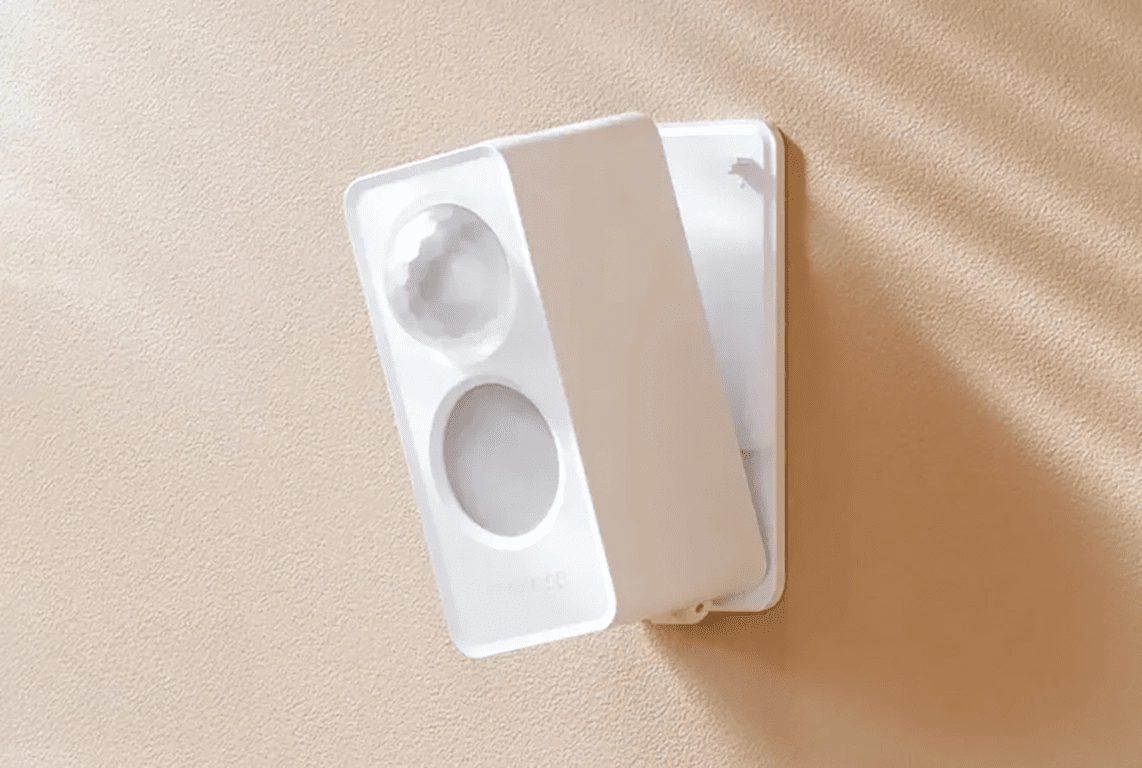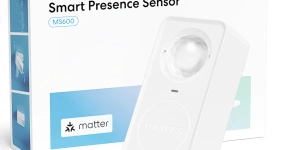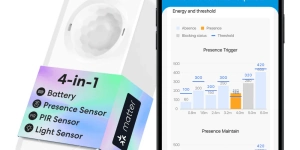Notable Matter device maker Meross just released the MS605, a new battery-powered presence sensor. This launch marks a significant shift for Meross as its initial attempt to tap into Thread; its previous devices were primarily based on Wi-Fi or utilized a Matter Bridge.
The presence sensor is a timely addition to the market, joining similar Matter-over-Thread battery-powered options like the Aqara FP300 and Lafaer LWR01. These devices have gained attention for offering advanced presence detection without the need for a constant power adapter connection.
Hardware and features
The MS605 is certified under the Matter 1.4 specification, with both the occupancy sensor and light sensor exposed to Matter platforms. According to the compliance files, features like sensitivity adjustments and on-hold time settings are not currently exposed via Matter, unlike the implementation seen in the Aqara FP300.
To add this device to third-party Matter-enabled apps such as Apple Home, Alexa, or Google Home, users will need a hub that supports both Matter and Thread. However, the product can also be paired and set up directly through the Meross app via Bluetooth, no needing for a Meross Hub.
The MS605 runs on a Nordic chipset and is powered by a CR123A lithium battery, which the company claims will last up to three years. Matter-over-Thread devices with Nordic chipsets usually have better performance and less issues in my previous testing.

The sensor combines mmWave radar with infrared motion detection to sense both subtle movements, such as breathing, and active motion. A real-time light sensor monitors ambient brightness and reports changes to the Matter platform to enable lighting automation, though Alexa does not currently support this light sensor feature, according to Meross.
The hardware is designed for flexible mounting, featuring a stand that folds 90 degrees and rotates 360 degrees. It is rated IP67 for water resistance, allowing it to operate in environments ranging from -20C to +60C, including humid bathrooms or cold basements. The sensor detects motion up to 6 meters away and precise presence 4 meters.
Three-zone control
Meross has included a three-zone smart scene control feature that allows the detection range to be divided into customizable zones within the Meross app. Each zone can independently set presence or absence conditions and appear as a separate sensor on supported third-party platforms. We believe that Meross is the only vendor shipping such a feature via Matter natively.

For example, a single sensor in a bathroom could trigger a night light at 6 meters, a main light at four meters, and a mirror light when presence is detected at 1.6 meters.
mmWave sensors vs PIR
Presence sensors are becoming a competitive category in the smart home market, attracting vendors to invest resources in new models, despite the slow adoption (due to improvable algorithms and higher price).
While traditional PIR (Passive Infrared) sensors rely on significant movement to trigger automations, mmWave radar technology can detect micro-movements, such as a person breathing or typing, ensuring lights don’t turn off when a user is stationary. As the technology becomes more affordable, more consumer-friendly options are entering the market.
Beyond the Meross MS605 and the previously mentioned Aqara and Lafaer models, other major brands are joining the race. SwitchBot recently released a 60GHz mmWave sensor, though it requires a Matter Bridge to integrate with Matter platforms. Meanwhile, Zemismart is planning to launch a battery-powered 24GHz mmWave sensor, further expanding the options available to consumers looking for precise, low-power presence detection.
Availability
The Meross MS605 is available now at the official online store, with a discounted price of $34.99 for a single unit or $109.99 for a four-pack.



